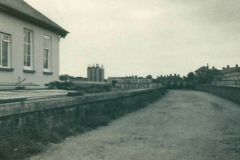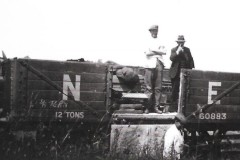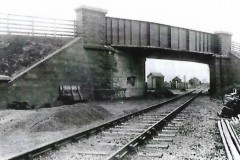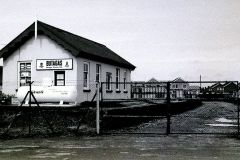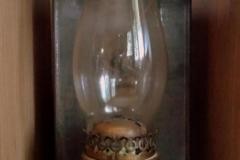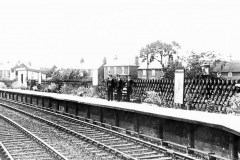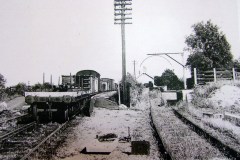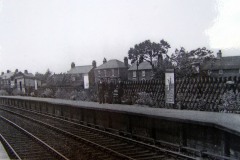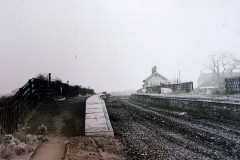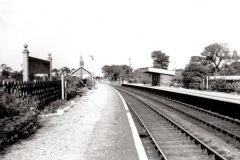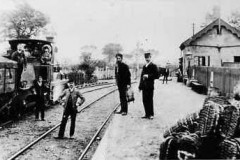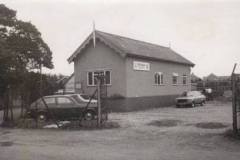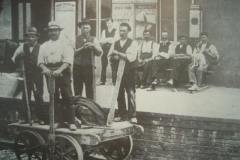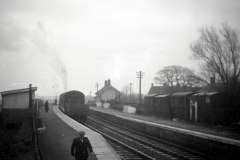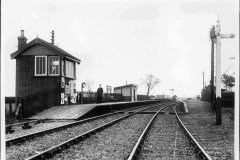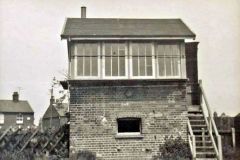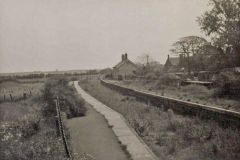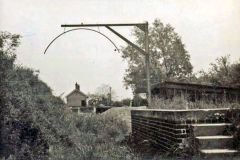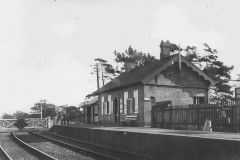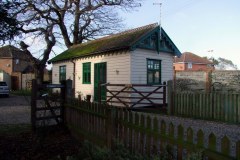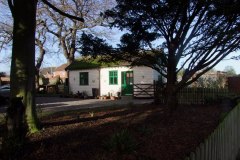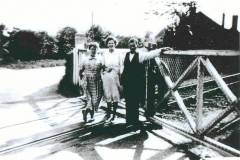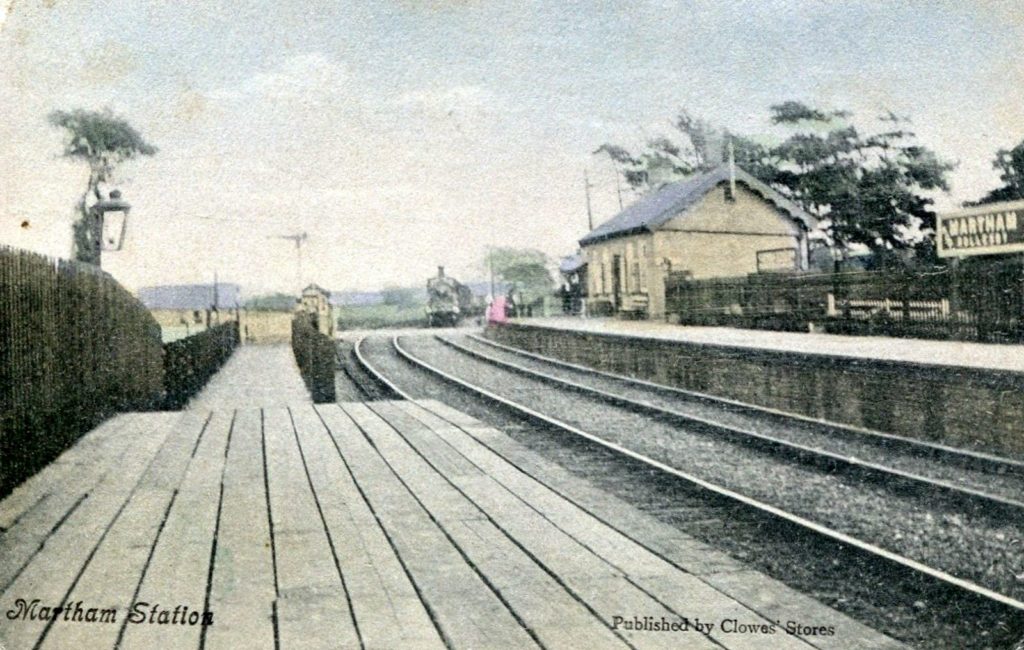
There are several good books that tell the story of The Midland and Great Northern Railway from Great Yarmouth to the Midlands that I cannot improve on so I will not go into too much detail here but instead will try to provide information that relates more to Martham and local people.
Martham Station opened on 15th July 1878. The original railway through Martham was the Great Yarmouth and Stalham Light Railway (GY&SLR), then later became the Yarmouth & North Norfolk (light) Railway before being amalgamated into the Eastern & Midland Railway (E&MR) in 1881. The GY&SLR was a poorly constructed line with wooden buildings and poor track. The coming of the E&MR, then the Midland and Great Northern Railway improved matters a great deal and linked Martham to other lines all over Norfolk.
Martham station had two lines which allowed trains to pass whilst the rest of the cross-country line was single track. It was not unusual therefore to see two trains at the station, one waiting for the other to arrive so they could pass each other.
The railway left Great Yarmouth and provided a coast hopper with stops at Newtown, Caister Camp, California Sands, Scratby, Ormesby and Hemsby before reaching Martham. In the early days our station was called ‘Martham (for Rollesby) Railway Station’. There was, of course, a level crossing at Rollesby Road and after trains left the station heading west they crossed three more level crossings, the first at the Repps Road/Cess Road junction; then at Low Road and the third crossing Common Road. All three had Gatehouses for which there is more information below. The line then continued via Potter Heigham and Catfield to Stalham and North Walsham and then onwards to the Midlands.
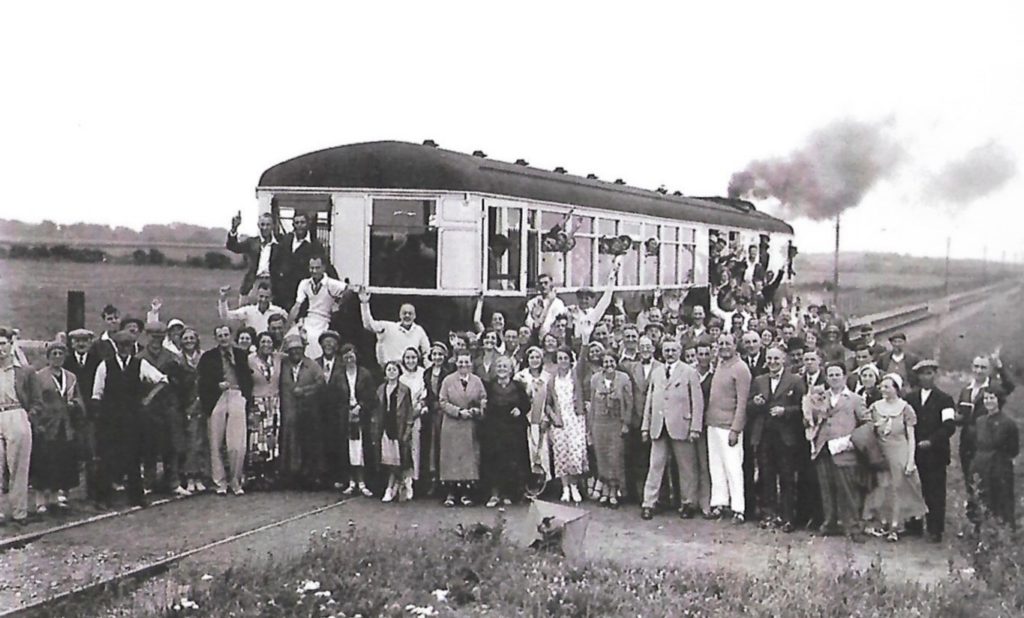
The lines became very popular for local people to have day trips to the coastal stops and a favourite form of travel was the Sentinel Steam Railcars affectionately known as ‘Tantivy’ which could often be seen passing through Martham.
There was an early oddity at Hemsby when the line was first built, because of a dispute about the line crossing a road it meant that for about a year the line was split in two and passengers had to alight and walk to the next section. This was resolved in 1879 when a new single station was opened for through trains.
Another quirk was the road bridge between Hemsby and Martham over the railway which was an unusual structure. The line went under the road bridge at an angle but the road deck was straight so that each end had girders protruding onto concrete piers. The photograph on the right shows the bridge under construction.
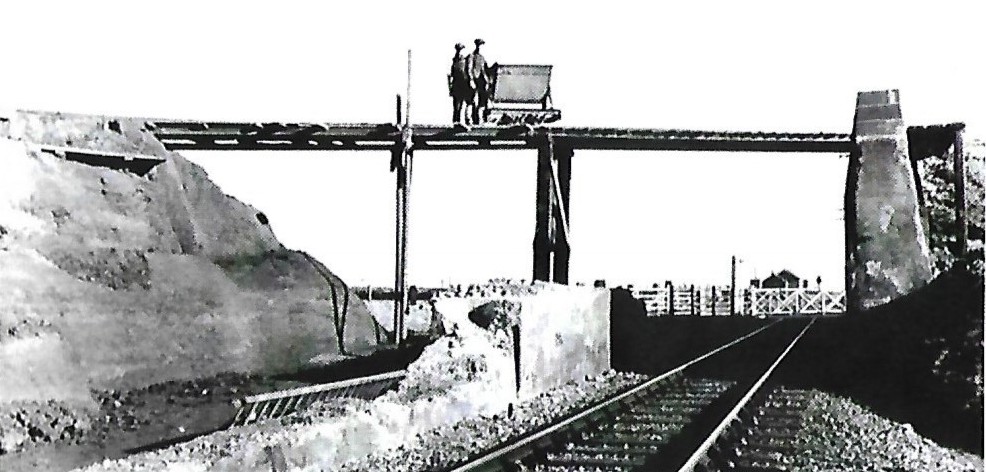
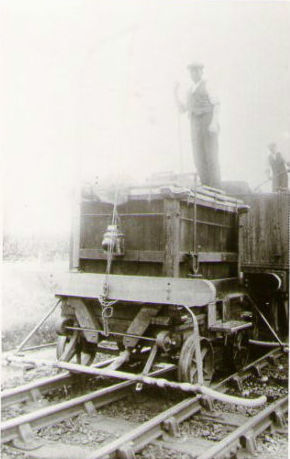
Today we hear about the wrong type of leaves on the line but on the rural line it seems that weeds were the problem and so a special weed spraying wagon was used between Martham & Hemsby. This one was borrowed from the Chemical Manure Co. of King’s Lynn and was used in 1932.
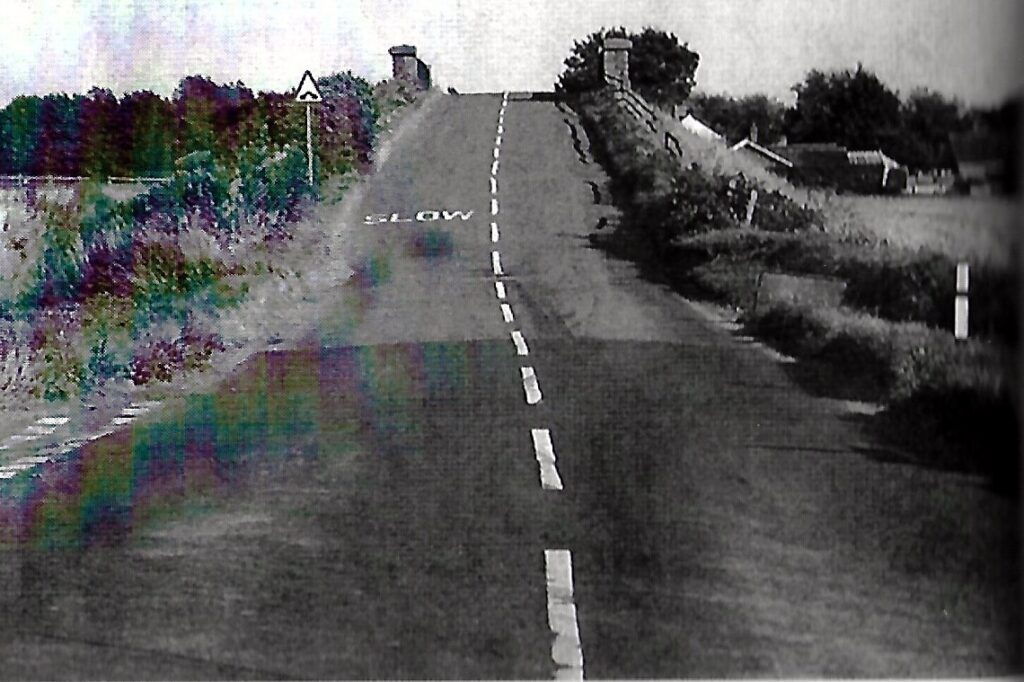
Several local people recall the station closing on 28th February 1959 and the closure adversely affected some local businesses. Martham Mushrooms had already diversified to a degree before the station shut down and they had their own lorries but they had to change operations particularly when trains were not available to catch the early morning markets. To overcome this one driver drove overnight to Birmingham and they used wholesale markets more frequently.
G. A Bailey Ltd who grew tomatoes and flowers had used the railway to take products to Peterborough from where they were sent on to six wholesale markets. Instead they had to send them via Great Yarmouth and Norwich but this proved to be expensive so they bought their own lorry to take produce to Spalding for distribution.
Lown Coal Merchants formerly had a yard at the station and moved to a new depot at the top of Hall Road. At first, they used haulage companies after the closure but later again bought their own lorries that travelled to Nottingham to collect coal.
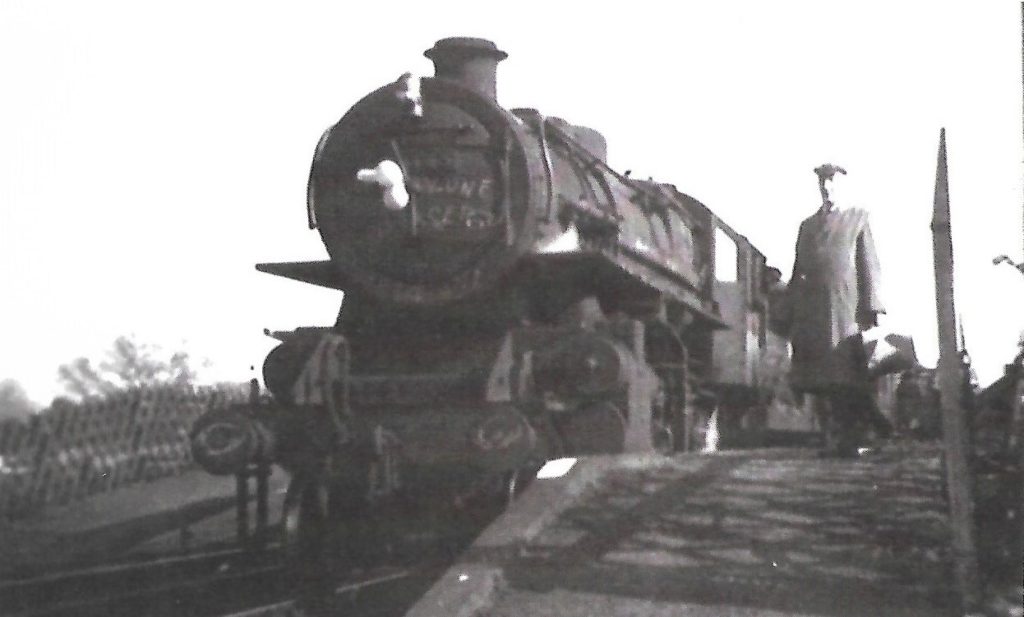
Butagas moved into the former station site after it closed and used it as their depot.

Accidental Deaths
In its 82-year history the local line saw tragedy with two local people being killed.
First Death
The first was when Frederick Grimmer was accidentally killed in a tragic accident on 2nd January 1947 whilst leading a tumbril and two horses across the railway. He was also known as ‘Punch’ Grimmer.
Frederick was born on 16th May 1874 in Martham as the first child of Richard Grimmer and Emily, nee Haywood and grew up with them at Cess. He had a spell when, as a teenager, he was a fisherman but was a farm worker and labourer for most of his life working for Wm Bracey & Co. He married Christianna Durrant the daughter of Samuel Durrant & Anna, nee Payne, on 2nd December 1899 at St Mary the Virgin. Together they had three children who were all born in Martham as follows:-
- Blanch A Grimmer was born on 6th April 1900.
- Frederick John Grimmer was born on 9th September 1905.
- George Albert Grimmer was born on 2nd October 1908.
At the inquest into his death his employer Sidney Gordon Bracey, Director of Wm. Bracey Co. said Mr Grimmer had been in their employment since 1921. On January 2nd he was carting sugar beet from a field on the south of the railway to a dump on the north. The gates to the occupation crossing were always open during work and trains coming from either direction were visible for a considerable distance. In the accident one of the horses was also killed and the tumbril was destroyed.
It was said that Frederick was sitting on one of the two horses carting sugar beet across the railway line when it was struck by the Yarmouth-Leicester express.
The engine driver, Robert Ernest Brown of 84 Harley Road, Great Yarmouth said that as the train approached Martham it was travelling at 50 m.p.h. When only 30 yards away he saw a horse on the line at the rural farm crossing known as Cattle Creek and sounded the whistle and applied the brakes. “In my own mind I knew it was almost impossible to avoid hitting the horse” he said.
He then saw the head of the second horse but could not say whether anyone was riding it, or whether it was drawing anything as his view was obstructed by the boiler and smokebox. The engine hit the second horse and stopped within 100 yards.
Brown continued; the signal was showing him a clear line and there was no reason why Grimmer should not have seen the engine.
Ernest Henry Mortlock of 66 Anson Road, Great Yarmouth, the fireman, said Mr Grimmer was sitting side-saddle on the back of the second horse, with his back towards the approaching train and appeared to pay no attention to the engine’s whistle. “In my opinion if the man had been keeping a proper look-out he must have seen the engine half a mile away as it is open country and there are no trees or other obstructions.” He added.
P.c. R W Jenkins said the body of the horse was found 150 yards away from the crossing. He considered it unlikely that Grimmer heard the express train owing to the direction of the wind.
Dr. P J Rochford expressed the opinion that Mr Grimmer was hurled over an adjacent bridge parapet and that his head struck the ground causing instantaneous death. A fracture of the base of the skull was the sole injury.
The other horse, whose name was Monty, stampeded off and was found at Potter Heigham but at least he survived.
The Coroner, Mr G W Barnard, recorded a verdict of “Accidental death”.
Second Death
There was a second mortality when Benjamin Arthur Moll was killed in January 1948 when he was hit by a train whilst walking his dog along the railway line just to the east of Martham Station. He was 73 and a retired deep-sea fisherman of 5 Council Houses, Hemsby Road, Martham. At an inquest into his death his wife said that ten years earlier he had broken both his ear drums and as a result was profoundly deaf. The inquest heard from the train driver who said that he first saw Mr Moll walking with his back to the train, when he was about 40 yards away and had repeatedly sounded the train’s whistle but could not avoid Mr Moll who did not appear the hear the engine. The inquest was held at the King’s Arms PH and the Coroner returned a verdict that Mr Moll had died of injuries caused by accidently being hit by a railway engine while he was walking on the line towards Martham Station.
Death in 1892
Tragic accidents were not confined to people. In 1892 a cow was killed on the line between Hemsby and Martham near Dairy Barn Farm which resulted in the engine coming off the rails. This is the account of the incident that was reported by the Yarmouth Independent on 12th November 1892.

Station Masters
The railway changed employment opportunities in the village quite dramatically providing a much wider range of jobs which had previously been based mostly on farming. Trade Directory records list the following Martham station masters but there were probably others between these years:-
- 1879 – Henry Smith
- 1883 to 1890 – John Say
- 1896 – John Winterburn
- 1900 – Arthur Borrett
- 1904 to 1912 – Sidney George Diver
- 1939 – Fred Ostler, who lived at Garfield House, Repps Road
- 1959 – William (Bill) Temple (when the station closed)

Gatehouses of Martham
The railway company built a gatehouse at each of the three crossings between Martham station and Potter Heigham. They were basic dwellings with no gas, electricity or water supplies and just an outside toilet down the garden but nevertheless represented an expense when built just for someone to be there to open the gates. They had a coal fire of course, with coal mainly supplied by the railway, or cast off from engines. It seems that there was no such thing as a formal gatehouse keeper as the menfolk of the families who lived in the gatehouses had other employment. It therefore seems that the job of opening and closing the gates fell to their wives. Night trains were not unusual so someone had to be ready at all hours whenever needed. At the time of the 1881 census none of the Gatehouses were specifically listed which is odd as they are mentioned in the summary on the opening page.
Gatehouse No 40, Common Road
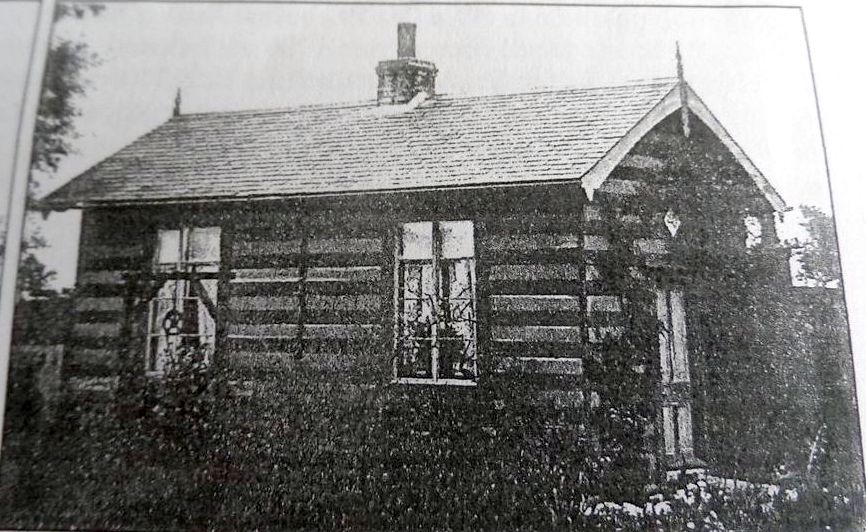
This gatehouse was built of timber by the contractors Wilkinson & Jarvis in 1880 and rebuilt in 1915 with concrete blocks made at the M&GN’s own works. They had an engineer called Mr Marriott who was a pioneer of using concrete in engineering and he even used it for station name boards. The gatehouse crossing was unusual in that it only served a farm track so for a long while the railway traffic was probably busier than the road.

In 1891, 1901 and 1911 (census returns) Gatehouse No 40 was in the care of George & Ruth Watson (nee Smith). George was from Martham and was a platelayer. Ruth was from Hethel. The 1901 census actually listed Ruth as being the railway gatekeeper. George is shown here in the middle of the gentlemen.
In 1891, 1901 and 1911 (census returns) Gatehouse No 40 was in the care of George & Ruth Watson (nee Smith). George was from Martham and was a platelayer. Ruth was from Hethel. The 1901 census actually listed Ruth as being the railway gatekeeper.
By the 1970’s it had a generator, a septic tank and mains water.
orkers to allow farm machines and animals to cross. The crossing gates did not cross the rail track, because the track was a lot higher than “the Loke” as it was called in those days.” He went on “my grandmother was so friendly with the engine drivers that they would actually stop the trains outside the Gatehouse and exchange coal for vegetables, fruit and other goods that were available, I remember blackberries were very popular; even if they could not stop they would still throw coal off for her to collect later.
Gatehouse No 41, Low Road
The gatehouse was built of timber by the contractors Wilkinson & Jarvis in 1880.
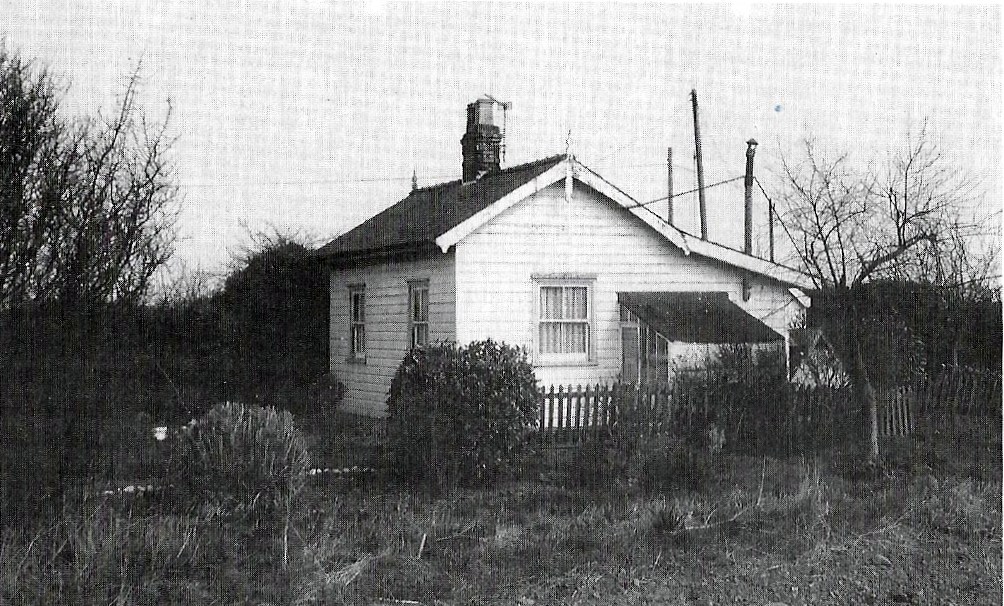
Ambrose Linford (1855-1933) and his wife Ellen, nee Proctor (1858-1936) lived at the Gatehouse from at least 1891 until about 1922. Ambrose was a platelayer so it is assumed that his wife Ellen was the crossing keeper although she was not listed as such on census forms. In 1922 Ambrose was awarded compensation after he suffered an injury at work on the railway. As a result, he was incapacitated and retired that year and by that time he and Ellen still lived in a gatehouse but this time at Stalham.
From 1936 to until at least 1939 Ruby Mason looked after it (and probably until 1959). She was married to Harold Mason who was a platelayer on the Martham to Hemsby gang from 1934 until the railway closed. When he was a boy Harold lived with his parents at Gatehouses No 38 at Potter Heigham.
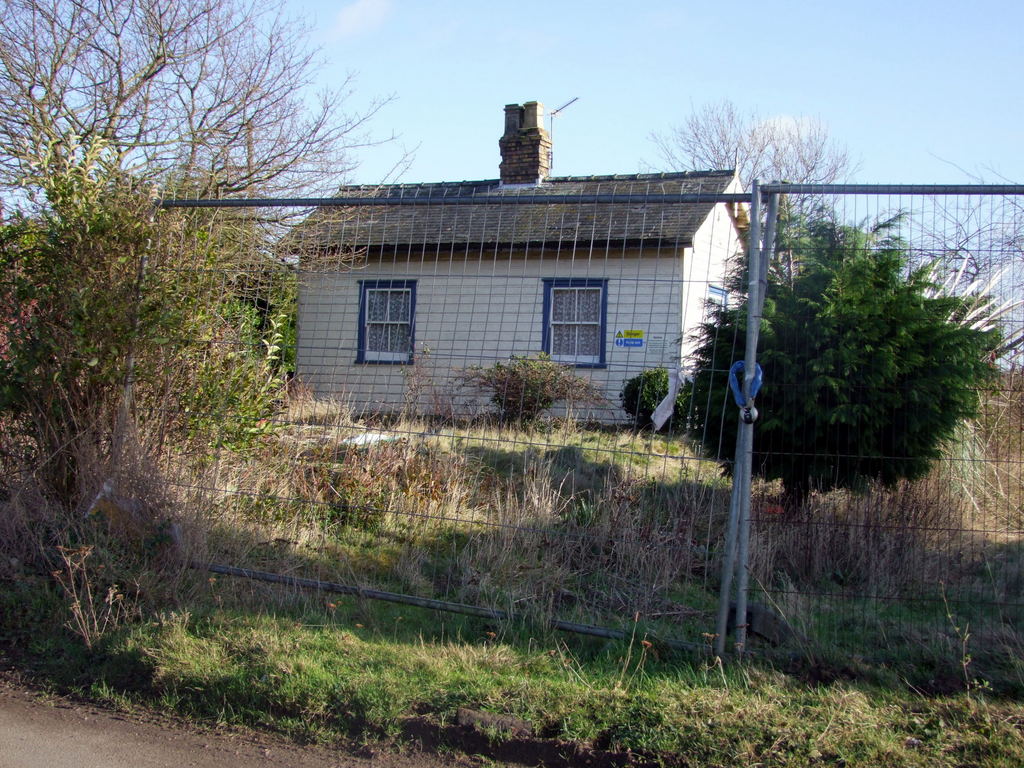
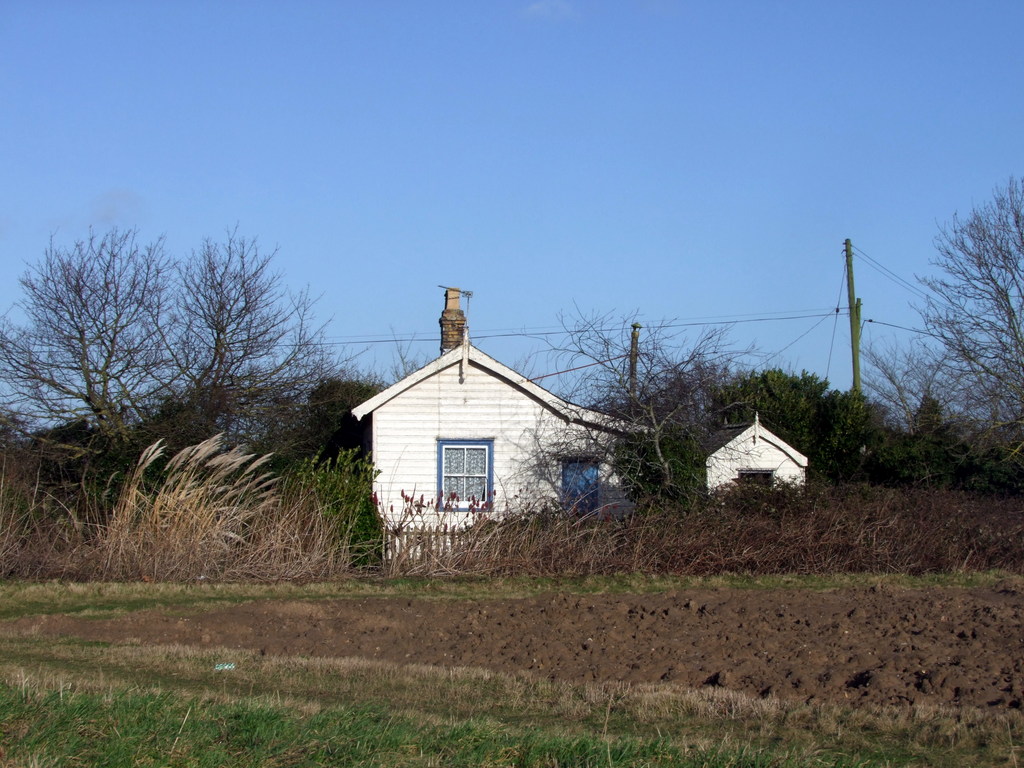
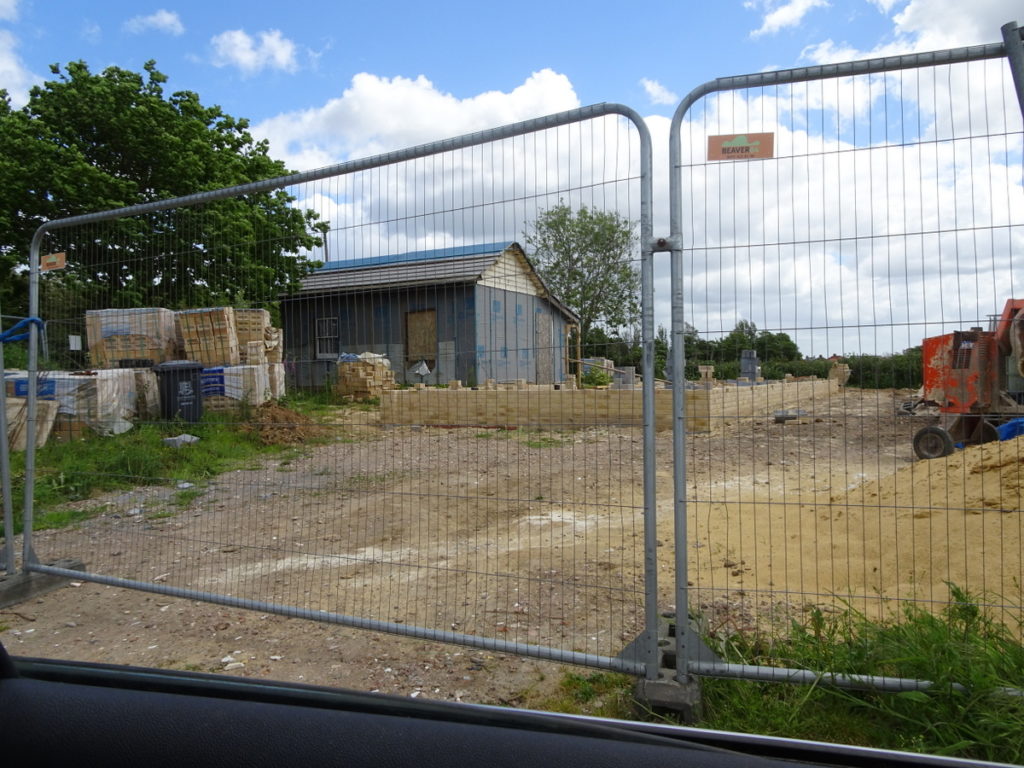
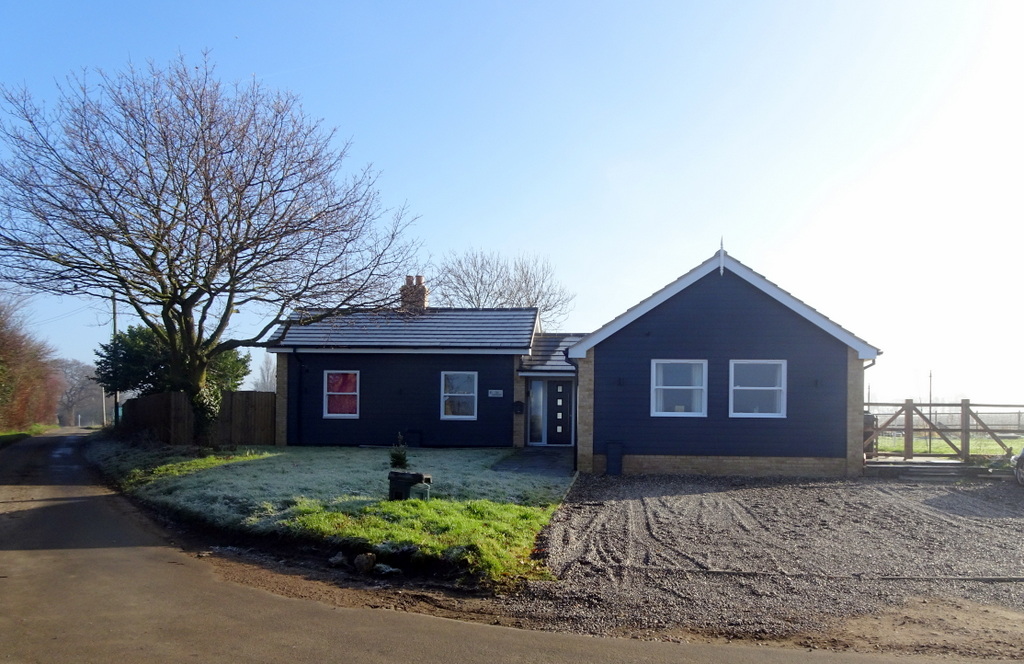
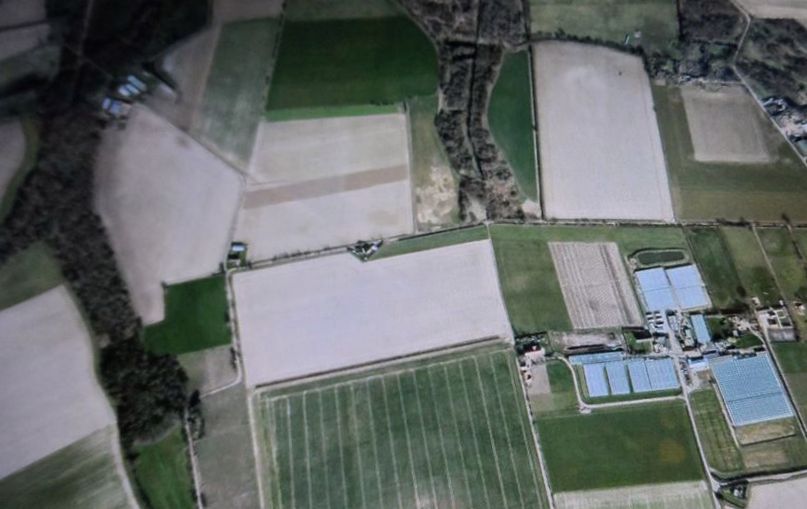
Gatehouse No 42, Repps Road/Cess Road
The gatehouse was built of timber by the contractors Wilkinson & Jarvis in 1880 and extended in around 1900 in weatherboard. William John Hubbard Garman, known as Darkie, was the resident crossing keeper from 1899 until June 1929 when he retired. Willian started on the E&MR in May 1892, probably at Holt having previously been involved with the fishing industry. In the 1893 survey of E&M staff he was shown as a Porter at Holt. In 1896 he was involved in a shunting accident at South Lynn as a result of which he lost an arm. Presumably after a suitable period of recuperation he was appointed to this gatehouse. He was married to Elizabeth, nee Culyer, and they had seven children; two, George and Ernest were both signalmen at Martham in later years but the family was also no stranger to tragedy; another son, Harry was killed in action in 1915 in France and their daughter Blanch also died in 1919 as a Land Army girl when the tractor she was driving caught fire and she had a heart attack
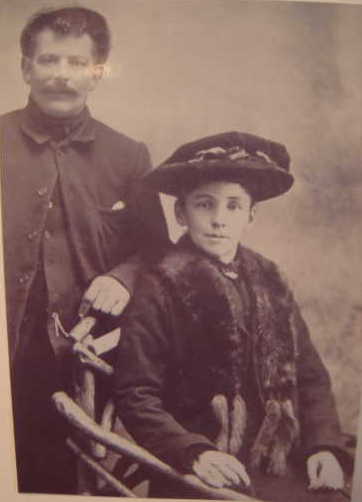
From at least 1936 until 1939, but probably much later, Frank Bishop (1889-1969) was the resident crossing keeper. Frank was married to Rosina, nee Chapman (1889-1963) and they were both from Hickling.
Gatehouse Memories
Below are the invaluable memories of Zena Welton, nee Mason, who lived at Gatehouse No 41 as a child. These were published in the Parish Magazine in May 2017.

Memories of the Railway
I acknowledge with thanks this extract from Colin Miller’s highly recommended book about growing up in Norfolk 1940-1960:
Although Martham had a railway station, even living at the Martham end of Rollesby I rarely used the railway for travelling to Yarmouth except in emergencies. A few people who used the train cycled to the station and left their bicycles propped up in racks outside the station buildings or took them with them in the guard’s van. Martham station lay on a branch of the Midland & Great Northern Joint Railway, affectionately known as the ‘Muddle and go Nowhere Railway’, which linked Yarmouth Beach station with Birmingham and the East Midlands. The line crossed the road from Rollesby to Martham at a level crossing immediately after Martham recreation ground, the track splitting in two at the station to allow trains travelling in opposite directions to pass one another. To the right of the crossing was a signal box and to the left the main station, which consisted merely of two platforms on either side of the track with a small building containing the ticket office and a waiting room on the Rollesby side. The station area was enclosed by trellis fencing, the station sign announcing ‘Martham for Rollesby’. A single siding allowed for the collection and delivery of goods and animals. Behind the station was a parking area, a loading dock, cattle pens and an immense mountain of coal.
Martham station was usually impeccably clean and tidy and frequently achieved ‘Best Station’ status on the North Walsham to Yarmouth section of the line. In my younger days I spent a lot of time at the station with my grandfather who was there to send and receive goods for his marker garden and building businesses. He would linger for hours talking to the staff while I was allowed to wander unhindered. I was both terrified and fascinated by the steam engines pulling long passenger trains or seemingly endless strings of goods wagons. I was regularly lifted on to an engine’s footplate by the stationmaster so that I could peer into the firebox or watch the fireman at work, no doubt breaking every rule of the railway company.”
Memories of Martham Railway Station (based on Facebook 14.11.2019)
Colin Tungate; One of my earliest memories was waving to the last train to leave Martham station on 28th February 1959.
Terry Turner; Mr Temple was the stationmaster and Jack Hicks was a porter when I was a child. In the winter there was always a roaring fire in the waiting room for a lovely warm up while waiting for your train.
William Buck; I can remember going to Yarmouth on the train with my parents and my grandfather used to have the land next to the station were the fire station now is and I can remember being with my dad cutting cabbages ready for market and watching the trains.
Steve Kennedy; I’ve got a lot of pictures, and a lamp (marked Martham) from the signal box and quite a few tickets.
Bertie Murrell; I can remember Fred Cross when he was a porter putting several detonators on the line and causing some excitement when the engine went over them as they went off and Fred, who was up for anything, it didn’t bother him. I can’t remember now what they had them for.
Terry Turner; The detonators used to be placed on the railway lines when it was foggy. They would be placed a set distance from the station and when the train set them off the driver would know he was approaching the station and to be ready to stop.
Bertie Murrell; Yes, he did, he was a postman for a long while. He was always fooling people he could make the sound of the cuckoo very realistic, he made me look up a few times.
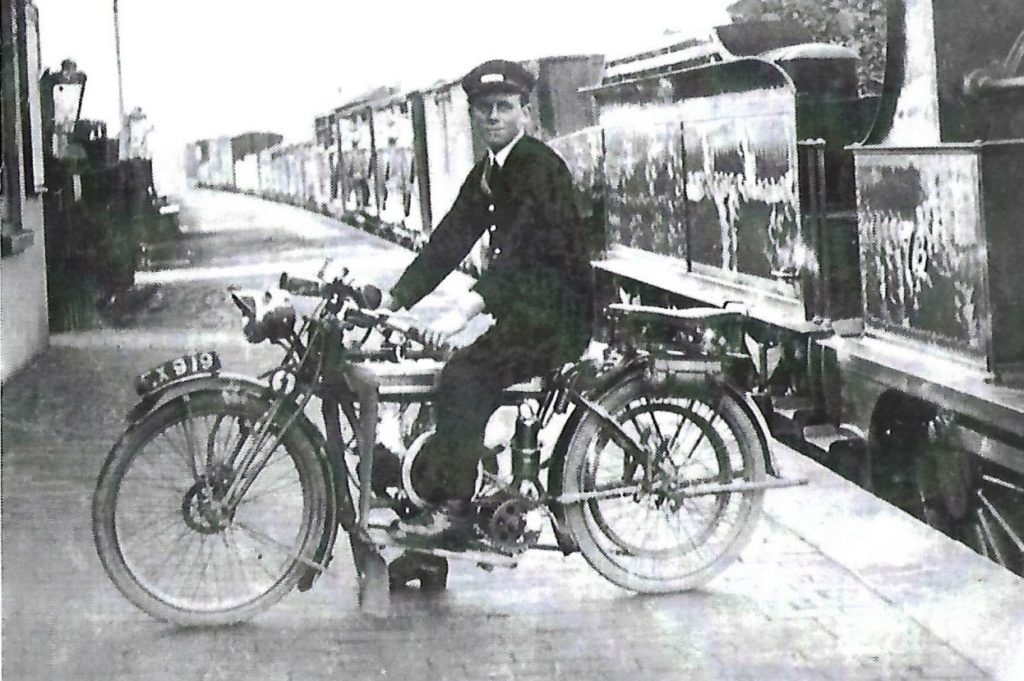
Peter Dawson; My wife remembers Fred Cross very fondly. Towards the end of his life she was one of his carers. He lived in a bungalow in Black Street with railway paraphernalia at it. He was a real character. He would sit watching the football and if his side scored, he would rush to the back door and blow his railway whistle loudly to celebrate.
Terry Turner; I remember the night the last trains came through Martham. There were several detonators on the line that night. We were looking out of the window and watched the last trains go through. The last one had “The End” written on the front. Sad times.
Bertie Murrell; ‘Shiner’ Watson was also a porter I seem to remember along with Mr Sparks and Mr Bishop they were nearly always on the crossing on Repps Road near what is the now the DIY.
Terry Turner; I remember Mr and Mrs Sparkes were crossing keepers on the line near the DIY. Their children were Sid and Nelly.
Bertie Murrell; One of my mates. Ivor Smith went as a porter at Martham, he didn’t last long because one of the jobs was to put a lamp on the top of the signal and he wasn’t keen on heights.
Nigel Brown; Was the old station taken over by Butagas? Top of Rowan Road.
Bertie Murrell; Yes, it was.
Sandra Taylor; Lovely to hear how Martham use to be, shame you can’t get the train from here to Birmingham now, takes forever.
Facebook 22.2.2020:
Sam Garrod; I delivered newspapers to the old station for about 4 years.
Rosie Davey; I was on the last train with my friends from Martham and Stalham boys.
Gayle Margaret; I live at what was the station end of Marlborough Green and we can’t grow grass in the garden at the back and the water never drains away. On inspection we found a lot of concrete about two feet down and my dad said it could have been from a signal or sidings of the railway.
Photographs
The album of photographs shown below includes copies of original plans for the line at Martham which are rarely seen. Hover your mouse over any photograph for a description of it. Click on any photo to zoom in and then you can scroll through as many as you like.
